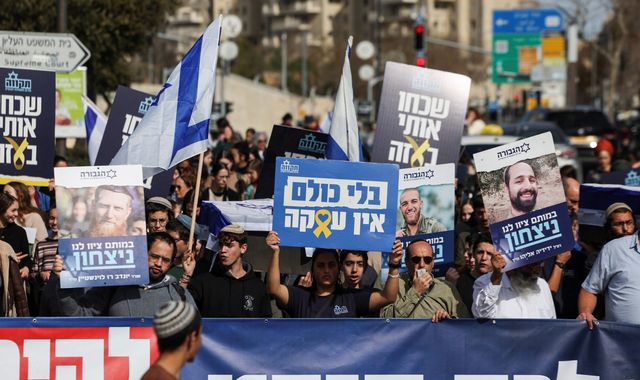If all goes well, the violence in Gaza which has ravaged the enclave for 467 long and brutal days will halt and hopefully lead to a better future.
However, the question remains – just how likely is the ceasefire deal to succeed in the long term?
Ceasefire deal latest: Dozens reported dead in Gaza strikes
The agreement will in the short term offer at least a pause from the fighting. It’s perhaps better to look at it in that context, as a cessation of hostilities rather than an actual ceasefire.
More than 45,000 Palestinians have been killed during Israel’s military campaign, according to the Hamas-led health ministry in Gaza.
Israel launched its response after around 1,200 people were killed and 250 taken hostage in Hamas’s attacks on 7 October 2023.
For Israel, the deal in the first phase will see the release of 33 hostages who have been held inside the strip since they were kidnapped that day.
It is not lost on anyone though how difficult it’s been – after many false starts – to get to this point.
The deal itself is deliberately ambiguous and there’s a sense that it’s been left that way to simply get it across the line and started.
Much could still go wrong and there are more questions than there are answers.
Hamas is involved in the negotiations, but Israel has made it clear that it can have no place in post-war Gaza.
However, as an entity and fighting force, it is diminished but far from defeated.
It will almost certainly not give up power easily.
Read more:
What’s in the ceasefire deal?
World will be watching – this ceasefire could yet collapse
It is this ambiguity that raises the terrifying spectre that the fighting could start up again at any point – many of the main issues remain unresolved.
For instance, we still don’t know who will run Gaza in the longer term.
The international community’s answer to that is a reformed Palestinian authority but Prime Minister Benjamin Netanyahu has said in the past that that’s not acceptable to Israel – neither is any role for Hamas.
As far as mediators are concerned, it seems there’s a hope that the deal can commence and then, over the six weeks of the first phase, more negotiations can take place – and hopefully, faith on both sides can be created to bring around a permanent ceasefire.
But if all of that collapses we could see a return to the violence.
There are also domestic considerations inside Israel – the deal in some respects is all things to all men.
It means Netanyahu can present it as both temporary or permanent, depending on who he’s speaking to or trying to appease.
But on an optimistic note, it does mean that as long as the negotiations continue, there’s no fighting.
More broadly it’s also worth bearing in mind that over the years there have been numerous attempts at ceasefire deals – most of which have ultimately failed to bring long-lasting peace to the region.
This pattern of repeated failures raises doubts about the likelihood of success this time.
Both sides have a long history of mistrust and animosity.





























